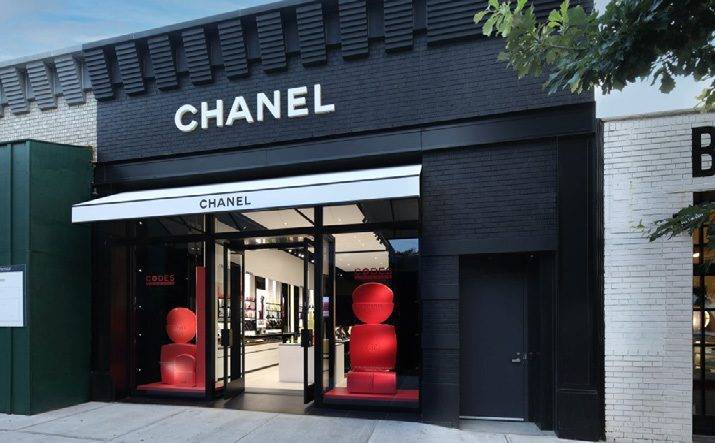As States Grapple with Reopening, Retail Industry thinks it has a ‘Blueprint’


Retail as an industry is planning for its reopening. Waiting for it is a patchwork of states with different governments, different rules and different rates of infection from COVID-19.
According to a recent poll, 66% of Americans don’t think their states should reopen retail stores yet. Many are beginning the re-opening process anyway.
The White House has left the decision to states, though it outlined a phased approach that states should use. Each phase comes with its own benchmark goals around infection trends to meet as states move from one phase to the next. More than a dozen states have at least partially re-opened their economies though they haven’t met the federal criteria, according to data compiled by Bloomberg. The New York Times also found that most states that are reopening don’t meet the White House’s guidelines. Meanwhile there are reports that COVID-19 deaths could continue increasing into June.
In that context, reopening presents difficult choices for retailers. But individual companies and the industry’s major associations are expressing confidence that retail stores can not only open, but open safely.
The National Retail Federation (NRF) and Retail Industry Leaders Association (RILA) have both committed resources to thinking about what retail looks like after the doors re-open and helping their members implement those procedures.
“The conversation evolved over the course of seven, eight weeks,” Brian Dodge, president of RILA, said in an interview. “We had all these member communities meeting regularly.”
In terms of practices, the biggest contributors to those conversations initially were the retailers that have kept their stores open throughout the pandemic, namely those retailers deemed essential. RILA’s ranks include many retailers that have continued operating their stores, including mass merchants like Walmart and Target, home improvement chains Lowe’s and Home Depot, and drugstore giant Walgreens.
Walmart and Target were among those that had to learn on the fly how to operate stores in the pandemic. Over time, they went from extra cleaning at their stores to stringent social distancing efforts, including metering out foot traffic and redirecting the flow of shoppers through their stores. They’ve also provided masks to their employees as well as other safety gear. (Even with those measures, some employees have rebelled, striking for more protective measures and compensation for their risk.)
The practices among mass merchants, grocers, drugstores and other open retailers have culminated in a “blueprint” that RILA calls “Shop Safe.” It includes detailed plans for occupancy limits, disinfecting, protective gear, contactless payment, health screening and keeping customers and employees apart by at least six feet (such as by rearranging breakroom seating). “Retailers are confident with the practices we’ve identified here,” Dodge said.
NRF has a similar program, “Operation Open Doors” that includes a checklist for opening stores and discussions on major issues such as property logistics, safety and liability. The initiative also flowed out of conversations that were already happening. “It made a lot of sense because we were having five or 10 calls a week to share different experiences and expectations across the universe,” David French, senior vice president of government relations, said in an interview.
In the field, retailers are already taking their cues from essential retail. Adam Pressman, a managing director in the retail practice at AlixPartners, told Retail Dive in an interview that retailers are looking to grocers and drugstores to learn the best way of operating in a pandemic.
But of course operating is complicated by category and store specifics. Take apparel. “How do you manage clothing on the main part of the floor vs. the backroom and keep touching to a minimum?” Pressman said.
Executing various store procedures is not an easy task across large portfolios and in culturally diverse areas. Employees and customers both have to be trained on how to adhere to a store’s social distancing procedures, such as one-way walk patterns and line spacing. “You really do as well as you can,” Pressman said.
Dodge said that these sorts of “harmonized” practices, developed by essential retailers and passed along to those that have been closed, are important for both customer expectations and policymakers.
“We want to demonstrate to governors that we have identified the practices that will work effectively, that are working effectively, to keep customers safe in stores,” he said. “So rather than everybody improvising rules on their own, they can draw from this [i.e. RILA’s “Shop Safe”] and create harmony from county to county, state to state, giving consumers clear expectations of what they’re going to encounter when they go shopping.”
But those blueprints are going out to retailers operating under a balkanized patchwork of federal, state and local regulators and governments. Dodge pointed to the importance of a single set of standards. French, too echoed, retailers’ need for a “consistent, national approach.”
Yet the United States’ system of government, and the White House’s approach to reopening, make a single set of standards a difficult proposition. The system gives considerable power to the states.
“This is more of a partnership rather than a hierarchy,” French said. “We are trying to use the Open Doors process to identify things to build a consistent national framework. On something where authority rests with the states, you can’t build a top-down national approach.”
In that environment, there’s a lot of variance. “There are confusing policies all over the place,” French said. “The states are trying to do their best. But the states don’t necessarily have any better answers than anybody else. This is all new territory. It’s all a shot in the dark, or a best educated guess about what’s going to work and what’s the most responsible way forward.”
The question of which retailers are essential is one recent example of how the tangled network of officials and jurisdictions complicates questions for retailers, as well as their customers and employees.
The Department of Homeland Security issued guidelines in March for which workers were considered essential infrastructure during the pandemic. But states had different takes on those guidelines and/or issued their own. Moreover, enforcement varied among local jurisdictions, and few if any jurisdictions have the resources to police the entire commercial world for compliance.
Consider the case of GNC, the vitamin and supplement retailer. In March, the company opted to keep its doors open as an essential retailer of food products, according to an internal memo obtained by Retail Dive. One state, Pennsylvania, told Retail Dive in March specifically that GNC was not considered essential, though the company had stores open in the state. California, meanwhile, included dietary supplement stores in its statewide guidance on essential retail. Other states queried about GNC by Retail Dive seemed more or less to be letting businesses self-police in making the judgment to stay open. (GNC later closed about 40% of its stores in the U.S. and Canada because of state government restrictions, according to securities filings.)
Re-opening could play out with much of the same confusion, given mixed messages from the White House and different approaches by the states. Nonetheless, many retailers seem confident and ready to reopen.
Simon Property Group on Monday said that 77 of its U.S. retail properties have reopened, with plans to open half of the company’s U.S. shopping centers within the next week. Simon has a number of safety procedures in place, including occupancy limits and employee screening, among others.
Individual retailers, too, have opened stores or plan to open stores in the coming weeks, including Kohl’s, Ulta, Abercrombie & Fitch and Gap, among others.
As much as compliance matters, the industry is also taking its cues from customers.
“How people feel about coming back into stores and shopping is important,” French said. “Maybe as important as what regulators and local authorities say.”
Original Article by Ben Unglesbee, Retail Dive | May 12, 2020 | As States Grapple with Reopening


